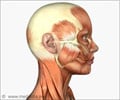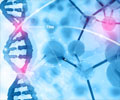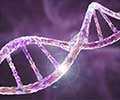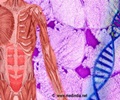Myoediting technique used along with gene-editing technology CRISPR-Cas9 can restore dystrophin protein in patients affected with Duchenne muscular dystrophy.
- Mutations responsible for Duchenne muscular dystrophy (DMD) can be corrected using myoediting along with CRISPR-Cas9 gene editing technology.
- Twelve different DMD mutation hotspots can be rectified via myoediting to produce functional dystrophin.
- Novel approach may be a potential therapeutic for over 60% of the DMD afflicted population.
Duchenne muscular dystrophy (DMD)
DMD is a progressive muscle wasting genetic disease which leads to degeneration of cardiac and skeletal muscles. Only boys are affected with DMD while girls can be asymptomatic carriers. The disease is caused by over 3000 different mutations in the dystrophin gene. Dystrophin is a protein that links the cytoskeleton of a muscle fiber to the surrounding extracellular matrix of muscle cells through the cell membrane. It maintains the integrity of the plasma membrane, acts as a shock absorber and prevents our muscles from breaking down as a result of wear and tear. Degeneration of the cardiac muscle, the muscle most affected by lack of dystrophin is the most common cause of death in DMD patients.Mutations and their effect on dystrophin
The dystrophin gene is the largest gene in our body that can be roughly divided into three sections, the head, body, and tail. Mutations in the body are called internal mutations and can result in a partially functional protein. In this case, the mutation causes a milder form of muscular dystrophy called Beckers muscular dystrophy. However, if the mutations are in the head or tail exons, also called the “essential” regions of the gene, dystrophin is not produced and results in the severe and more lethal form of the disease called Duchenne muscular dystrophy. Without dystrophin, the patient’s muscle cells become leaky and eventually die. This causes degeneration of muscle tissue gradually spreading throughout the body. When the heart muscles degenerate, the condition is fatal.The researchers took cells from DMD patients and converted them to stem cells. The stem cells were then myoedited and reprogrammed to grow into heart muscle cells that were able to produce dystrophin protein. Thus when the cells made protein from the genes that underwent myoediting, the hotspots were ‘skipped-over;’ specifically, twelve mutation hotspots of Duchenne muscular dystrophy (DMD) were corrected to produce functional dystrophin protein. In the study, a tiny bit of heart muscle tissue was then grown, and the resultant tissue could beat and remained healthy.
While this approach cannot correct all DMD mutations, it may be a potential therapeutic for over 60% of the DMD afflicted population. Based on the type of mutation present myoediting can either correct the gene to produce a perfect dystrophin protein or a partially functional protein. If several internal exons are skipped, there is some abnormality in the dystrophin protein, and that would resemble Beckers muscular dystrophy. But, this too, is a significant relief for those with DMD. In case of insertions and duplications in the DMD gene, these can be perfectly corrected to restore a fully functional dystrophin protein.
References:
- Correction of diverse muscular dystrophy mutations in human engineered heart muscle by single-site genome editing - (http://advances.sciencemag.org/content/4/1/eaap9004.full)
- Long, C. et al. Correction of diverse muscular dystrophy mutations in human engineered heart muscle by single-site genome editing. Science Advances 4, eaap9004 (2018).
















